 W
WAelurognathus is an extinct genus of gorgonopsian therapsids from the Permian of South Africa.
 W
WAndrewsarchus is an extinct genus of mammal that lived during the middle Eocene epoch in what is now Inner Mongolia, China. Only one species is usually recognized, A. mongoliensis, known from a single skull of great size discovered in 1923 during the expeditions to central Asia by the American Museum of Natural History (AMNH). Generally classified as a mesonychid since its original description, most recent studies classify it as an artiodactyl. One study specifically classifies Andrewsarchus as a member of the clade Cetancodontamorpha, closely related to entelodonts, hippos and cetaceans.
 W
WAraucaria mirabilis is an extinct species of coniferous tree from Patagonia, Argentina. It belongs to the section Bunya of the genus Araucaria.
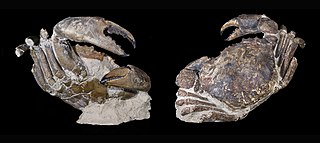 W
WArchaeogeryon is an extinct genus of crab from the Miocene, the type species in the genus is Archaeogeryon peruvianus. Despite the species name, the crab is only known from the Guadal Formation, Chile.
 W
WCadurcodon is an extinct genus of amynodont rhino that lived during the Late Eocene to the Oligocene period. Fossils have been found throughout Mongolia and China. It may have sported a tapir-like proboscis due to the distinct features found in fossil skulls.
 W
WChilotherium is an extinct genus of rhinoceros endemic to Eurasia during the Miocene through Pliocene living for 13.7—3.4 mya, existing for approximately 10.3 million years .
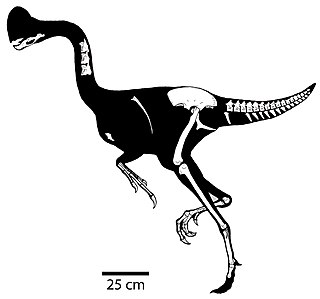 W
WChirostenotes is a genus of oviraptorosaurian dinosaur from the late Cretaceous of Alberta, Canada. The type species is Chirostenotes pergracilis.
 W
WDinofelis is a genus of extinct sabre-toothed cats belonging to the tribe Metailurini. They were widespread in Europe, Asia, Africa and North America at least 5 million to about 1.2 million years ago. Fossils very similar to Dinofelis from Lothagam range back to the Late Miocene, some 8 million years ago.
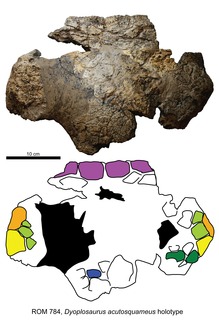 W
WDyoplosaurus is an extinct genus of ankylosaurid dinosaurs within the subfamily Ankylosaurinae. It is known from the lower levels of the Late Cretaceous Dinosaur Park Formation of Alberta, Canada. It contains a single species, Dyoplosaurus acutosquameus.
 W
WIranotherium was a large elasmothere rhinoceros, as big as a modern white rhino, found in the Middle East and Central Asia. It was a precursor of the related Sinotherium, and may have been ultimately outcompeted by its descendant. Males were larger than the females and had more developed muscle scars on the zygomatic arch.
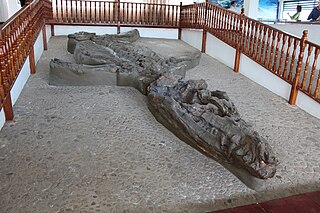 W
WKronosaurus is an extinct genus of short-necked pliosaur. With an estimated length of 9 to 10.9 meters, it was among the largest pliosaurs, and is named after the leader of the Greek Titans, Kronos. It lived in the Early Cretaceous period. Fossil material has been recovered from the Toolebuc Formation and Wallumbilla Formations (Aptian) of Queensland and New South Wales in Australia, and from the upper Paja Formation in Boyacá, Colombia, and assigned to two species.
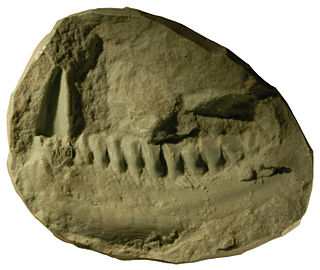 W
WLycorhinus is a genus of heterodontosaurid ornithischian dinosaur hailing from the Early Jurassic strata of the Elliot Formation located in the Cape Province, South Africa.
 W
WMelanorosaurus is a genus of basal sauropodomorph dinosaur that lived during the Late Triassic period. A herbivore from South Africa, it had a large body and sturdy limbs, suggesting it moved about on all fours. Its limb bones were massive and weighty, like sauropod limb bones.
 W
WMetailurus is a genus of saber-toothed cat in the family Felidae, and belonging to the tribe Metailurini, which occurred in North America, Eurasia and Africa from the Miocene to the Middle Pleistocene. This genus was formally described by O. Zdansky in 1924. Metailurus minor has been reassigned to the felid genus Yoshi.
 W
WOviraptor is a genus of oviraptorid dinosaur that lived in Asia during the Late Cretaceous period. The first remains were collected from the Djadokhta Formation of Mongolia in 1923 during a paleontological expedition led by Roy Chapman Andrews, and in the following year the genus and type species Oviraptor philoceratops were named by Henry Fairfield Osborn. The genus name refers to the initial thought of egg-stealing habits, and the specific name was intended to reinforce this view indicating a preference over ceratopsian eggs. Oviraptor is known from a single partial skeleton, as well as a nest of about fifteen eggs that have been referred to this species. Though numerous specimens have been referred to the genus, only the holotype with eggs and a juvenile are recognised.
 W
WParietobalaena is an extinct genus of baleen whale, belonging to the family Pelocetidae. Fossils are found in Miocene-aged marine strata in North America, Europe, Australia and Japan.
 W
WPropleopus is an extinct genus of marsupials. Three species are known: P. chillagoensis from the Plio-Pleistocene, and P. oscillans and P. wellingtonensis from the Pleistocene. In contrast to most other kangaroos, and similar to their small extant relative, the musky rat-kangaroo, they were probably omnivorous.
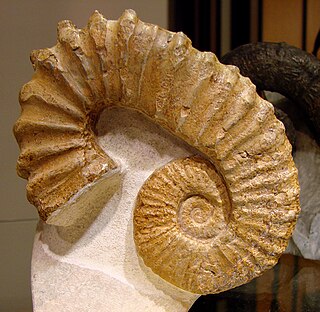 W
WPseudocrioceras is an extinct genus of ammonites. The species Pseudocrioceras anthulai has been found in strata from the Barremian - Aptian age of Chipatá, Santander, Colombia and is known from Georgia and Dagestan. The species Pseudocrioceras duvalianum and Pseudocrioceras fasciculare are found in the Barremian of France.
 W
WSaurornithoides is a genus of troodontid maniraptoran dinosaur, which lived during the Late Cretaceous period. These creatures were predators, which could run fast on their hind legs and had excellent sight and hearing. The name is derived from the Greek stems saur~ (lizard), ornith~ (bird) and eides (form), referring to its bird-like skull.
 W
WSinotherium was a genus of single-horned rhinoceri of the late Miocene and Pliocene. It was ancestral to Elasmotherium, and its fossils have been found in western China. Sinotherium diverged from the ancestral genus, Iranotherium, first found in Iran, during the early Pliocene. Some experts prefer to lump Sinotherium, and Iranotherium into Elasmotherium.
 W
WSphenosuchus is an extinct genus of crocodylomorph from the Early Jurassic Elliot Formation of South Africa, discovered and described early in the 20th century. The skull is preserved very well but other than elements of the forelimb and isolated parts of the hind limb, the Sphenosuchus material is incomplete. It was probably quadrupedal, but may have been a facultative biped.
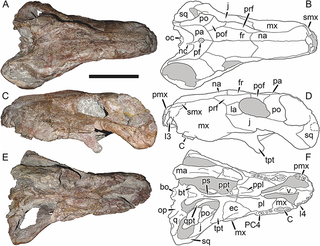 W
WSycosaurus is an extinct genus of rubidgeine gorgonopsians from the Usili Formation of Tanzania. It was medium-sized, about 1.2 m in length. It was first named by Haughton in 1924, and contains two species, S. laticeps and S. nowaki.
 W
WVelociraptor is a genus of dromaeosaurid theropod dinosaur that lived approximately 75 to 71 million years ago during the latter part of the Cretaceous Period. Two species are currently recognized, although others have been assigned in the past. The type species is V. mongoliensis; fossils of this species have been discovered in Mongolia. A second species, V. osmolskae, was named in 2008 for skull material from Inner Mongolia, China.